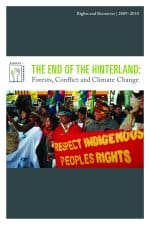Date: June 23, 2011
Forests have long been a hinterland: remote” “backward” areas largely controlled by external” often urban” actors and seen to be of little use to national development or the world except as a supply of low-valued natural resources. 2009 marks the beginning of the end of this era: Forest lands are booming in value for the production of food” fuel” fiber and now carbon. New global satellite and communications technology allow the world to peer into” assess the value of” and potentially control forests from anywhere in the world. More than ever” forests are bargaining chips in global climate negotiations and markets. This unprecedented exposure and pressure” and risk to local people and their forests” is being met by unprecedented levelsof local organization and political influence” providing nations and the world at large tremendous opportunity to right historic wrongs” advance rural development and save forests. But the chaos in Copenhagen at COP15 laid bare the looming crises that the world will face if the longer-term trends of ignored rights” hunger” and climate change remain inadequately addressed in 2010. While the era of the hinterland is ending” the future of forest areas is not yet clear. There will be unparalleled national and global attention and investment in forests in 2010—but who will drive the agenda and who will make the decisions? Will forest areas remain controlled from beyond? On whose terms will the hinterland be integrated into global markets and politics? This report takes stock of the current status of forest rights and tenure globally” assesses the key issues and trends of 2009″ and identifies key questions and challenges that we will face in 2010.

